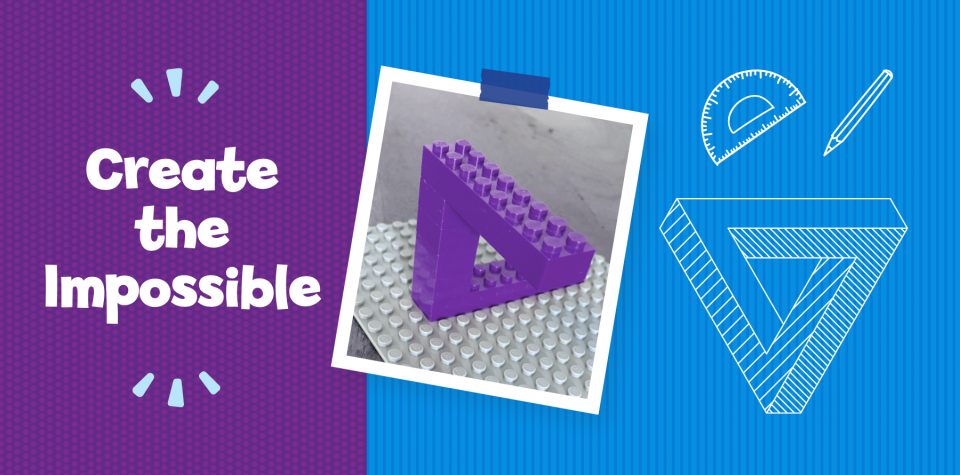
The Impossible Triangle Optical Illusion: Draw and Build It!
Is your child fascinated by magic tricks? Get ready to unleash your inner magician as you explore how our eyes play tricks on us. In this activity, you’ll create your very own optical illusion: the impossible triangle!

An optical illusion uses patterns, color, and light to make images that confuse our brains. How does it work? Well, when our eyes gather information from the world around us, our brain’s job is to make sense of it. To understand what our eyes are seeing, our brains create something called a perception. But optical illusions actually cause our perceptions to be incorrect! They trick our brains into thinking we see something that’s not actually the true image.
Optical illusions are fun to explore! This activity highlights the optical illusion triangle. This is an object that can be drawn but cannot exist in 3-D form—it’s actually impossible! And that’s how it got its nickname of “the impossible triangle.” For our first optical illusion, we’ll guide your child to do the impossible as they create a model of the impossible triangle using building blocks. Then, we’ll teach them how to draw the optical illusion triangle on paper. Get ready for some mind-bending fun!
Supplies
- Building bricks (one 2×10-stud brick, one 2×8-stud brick, four 2×2-stud bricks)
- Building bricks base (16×16-stud or 32×32-stud)
- Paper
- Pencil
- Eraser
- Ruler
- Markers in two different colors
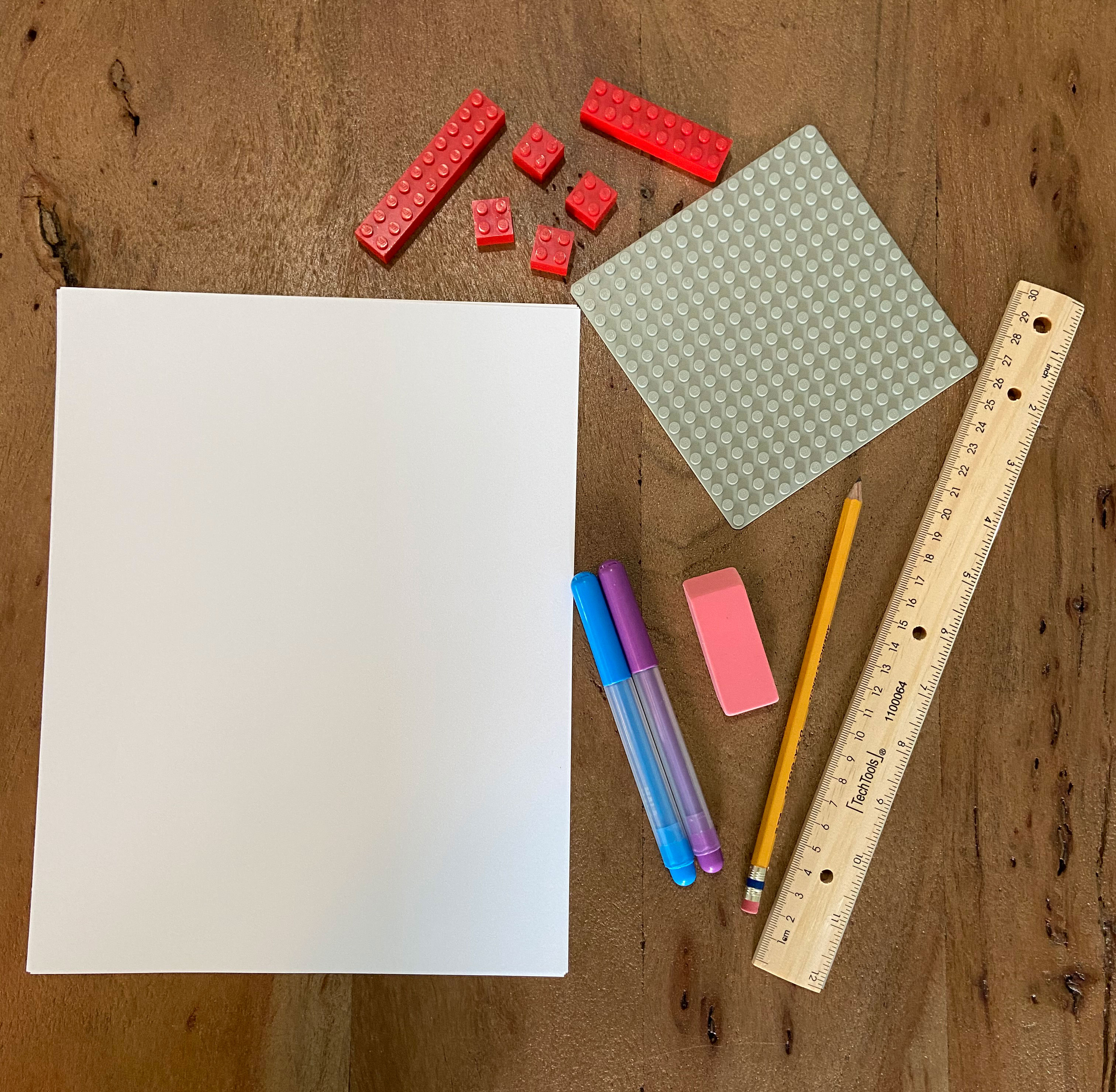
How to Build and Draw an Impossible Triangle
First, let’s build!
Step 1: Collect the building brick base and the pieces you’ll need to build the impossible triangle. It’s helpful to use building bricks that are all the same color.
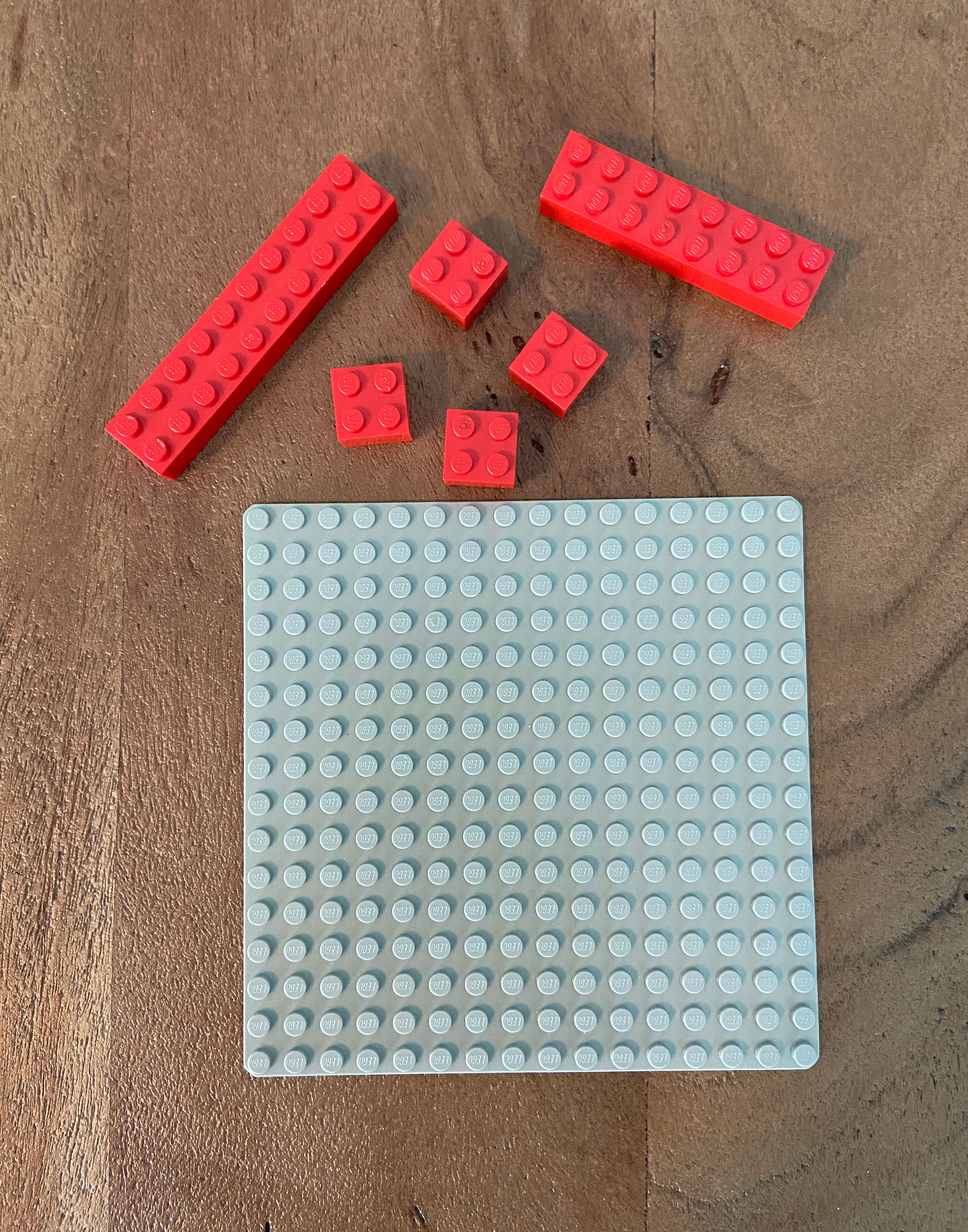
Step 2: Place the 2×10-stud brick on the base.
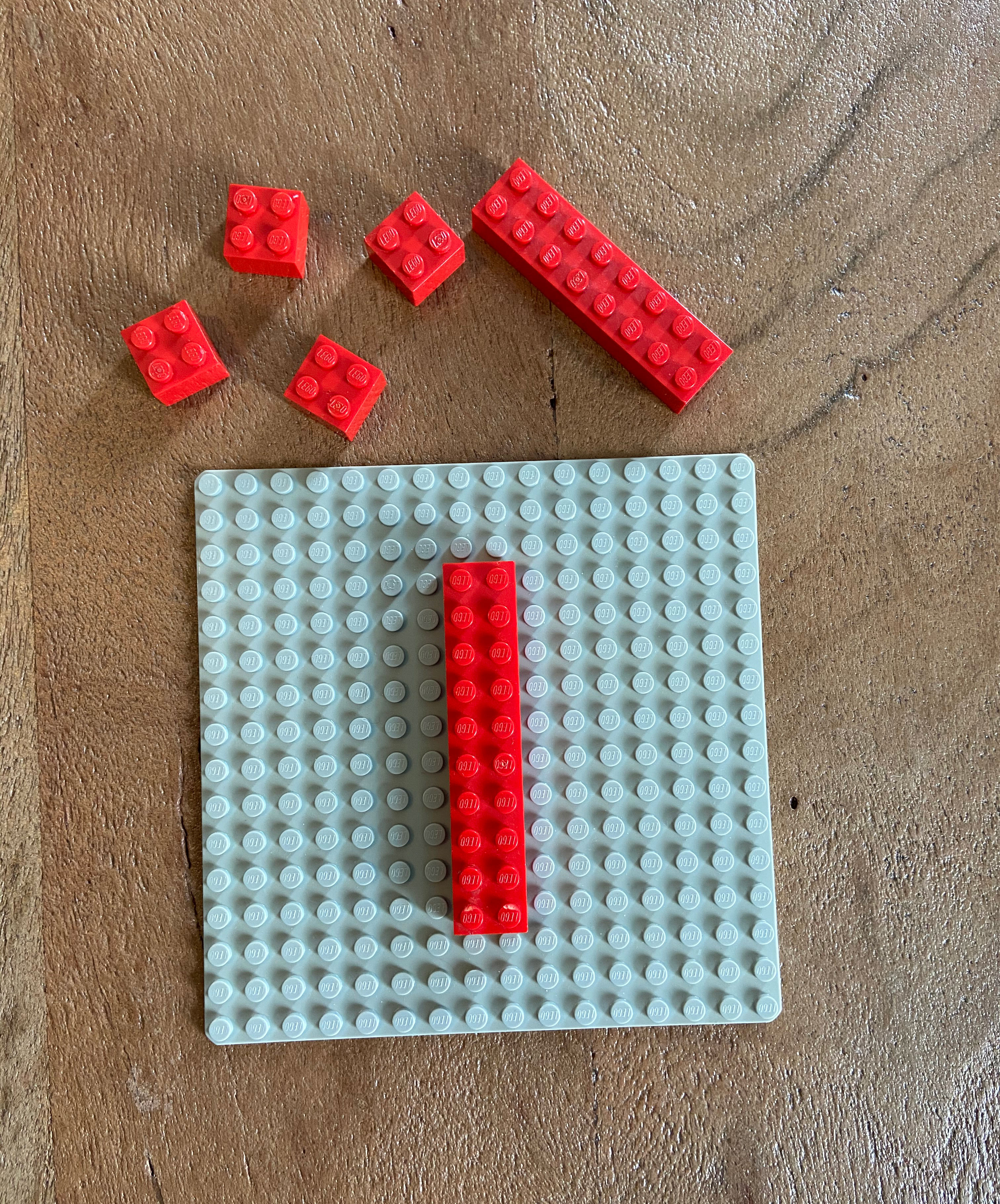
Step 3: Connect the 2×2-stud bricks. Add the stack to one end of the 2×10-stud brick. You should have a structure that looks like an L now.
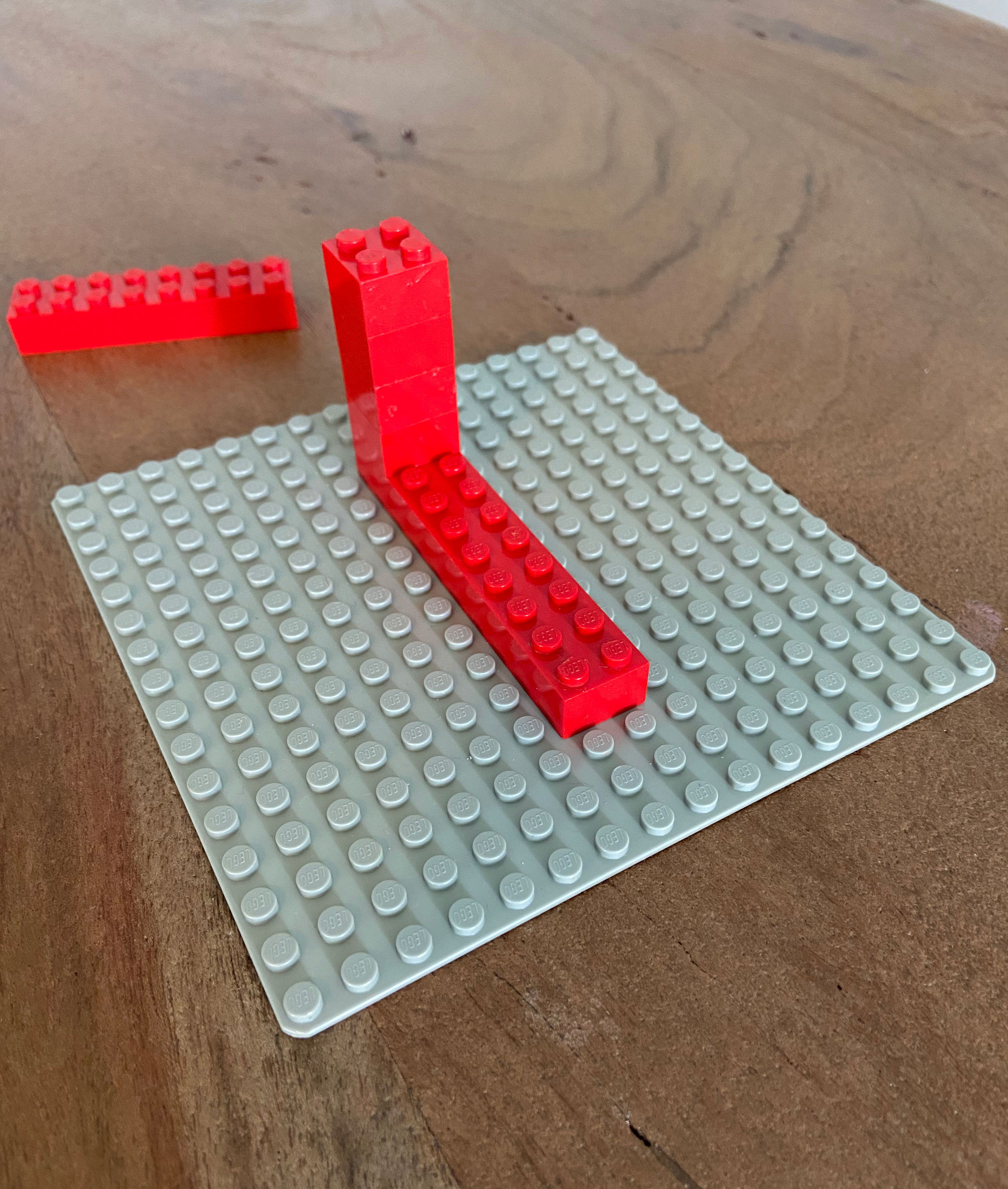
Step 4: To complete your optical illusion triangle, add the 2×8-stud building block at the top. It should face away from the bottom brick. From an angle, the structure should look like a 7.
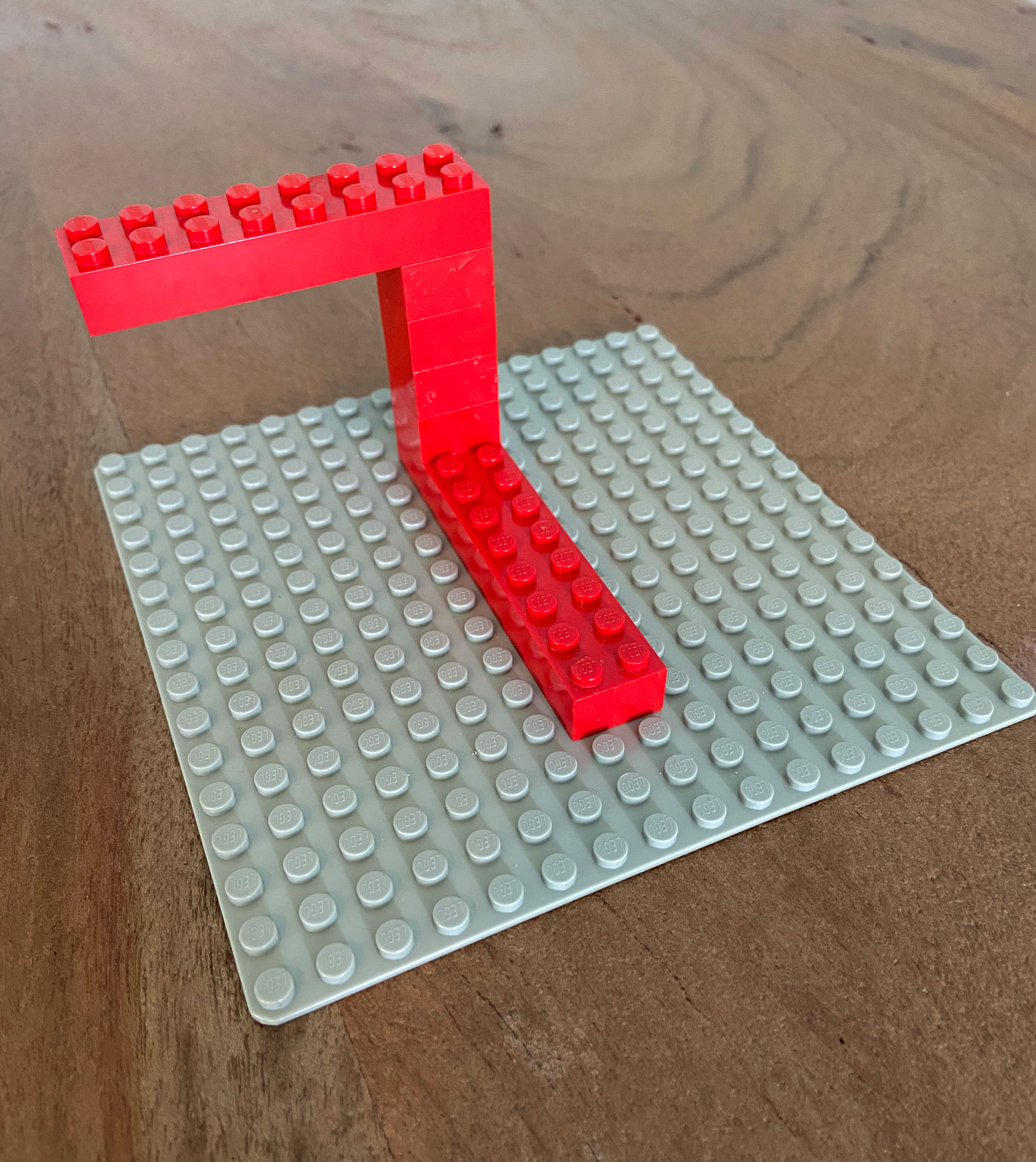
Step 5: Now it’s time to trick your brain! Move around, looking at your optical illusion triangle, until it looks like the sides are connected. To help your brain perceive the illusion, try closing one eye (which skews depth perception), moving closer or farther away, or moving side to side! Did it work?
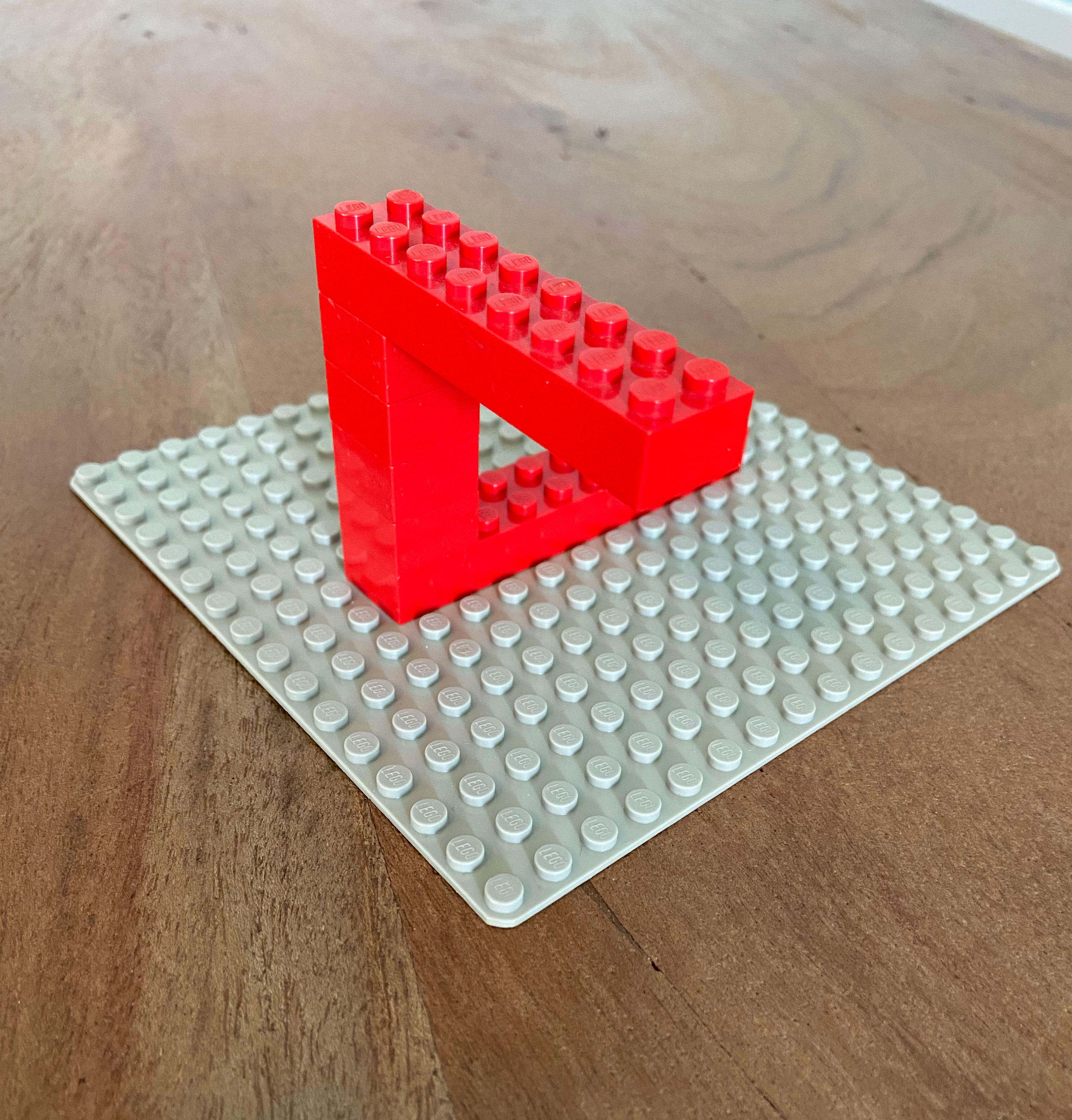
Now, let’s draw!
Step 1: On a blank piece of paper, use a pencil to draw a triangle with equal sides. (Draw lightly, as we’re going to erase some lines later!) This type of triangle is called an equilateral triangle. It’s helpful to use a ruler to help measure equal sides and make straight lines.
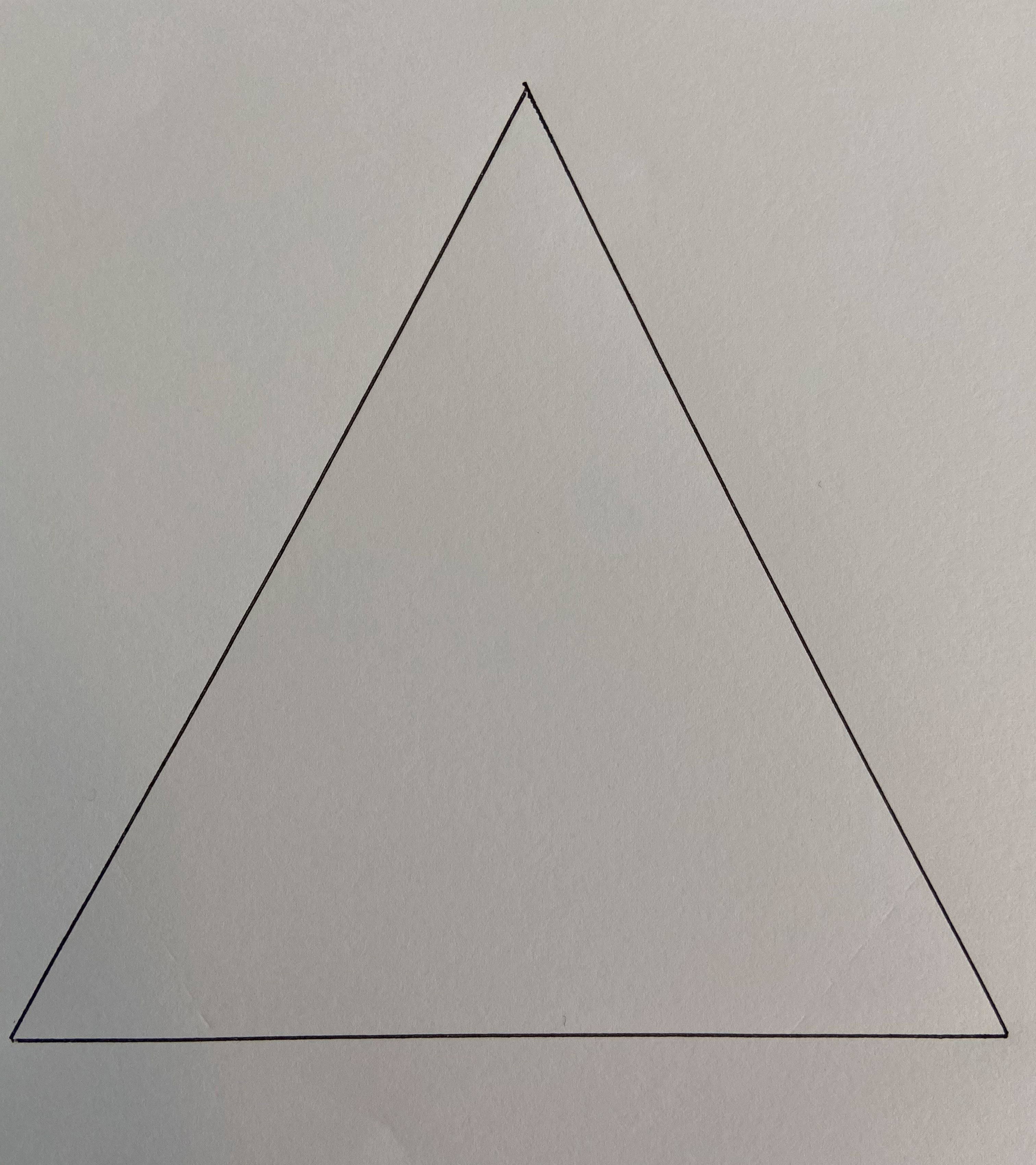
Step 2: Next, draw a line in each corner to make three smaller triangles. New lines in the picture are highlighted with yellow for clarity.
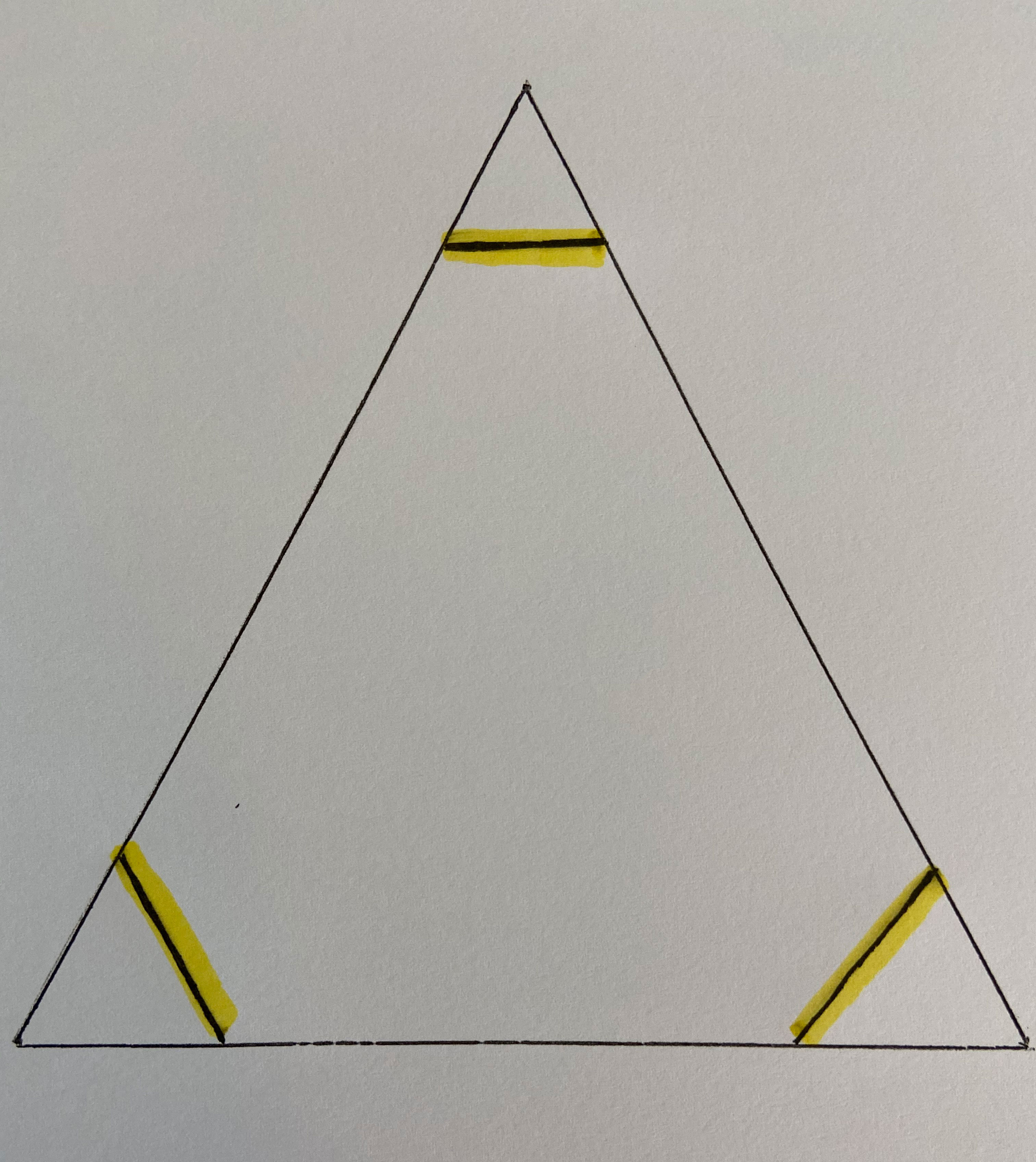
Step 3: Now, connect the small triangles. Draw three lines that are parallel to the original triangle. (Parallel lines go in the same direction and never meet or cross each other.) Now you can see a smaller triangle in the center.
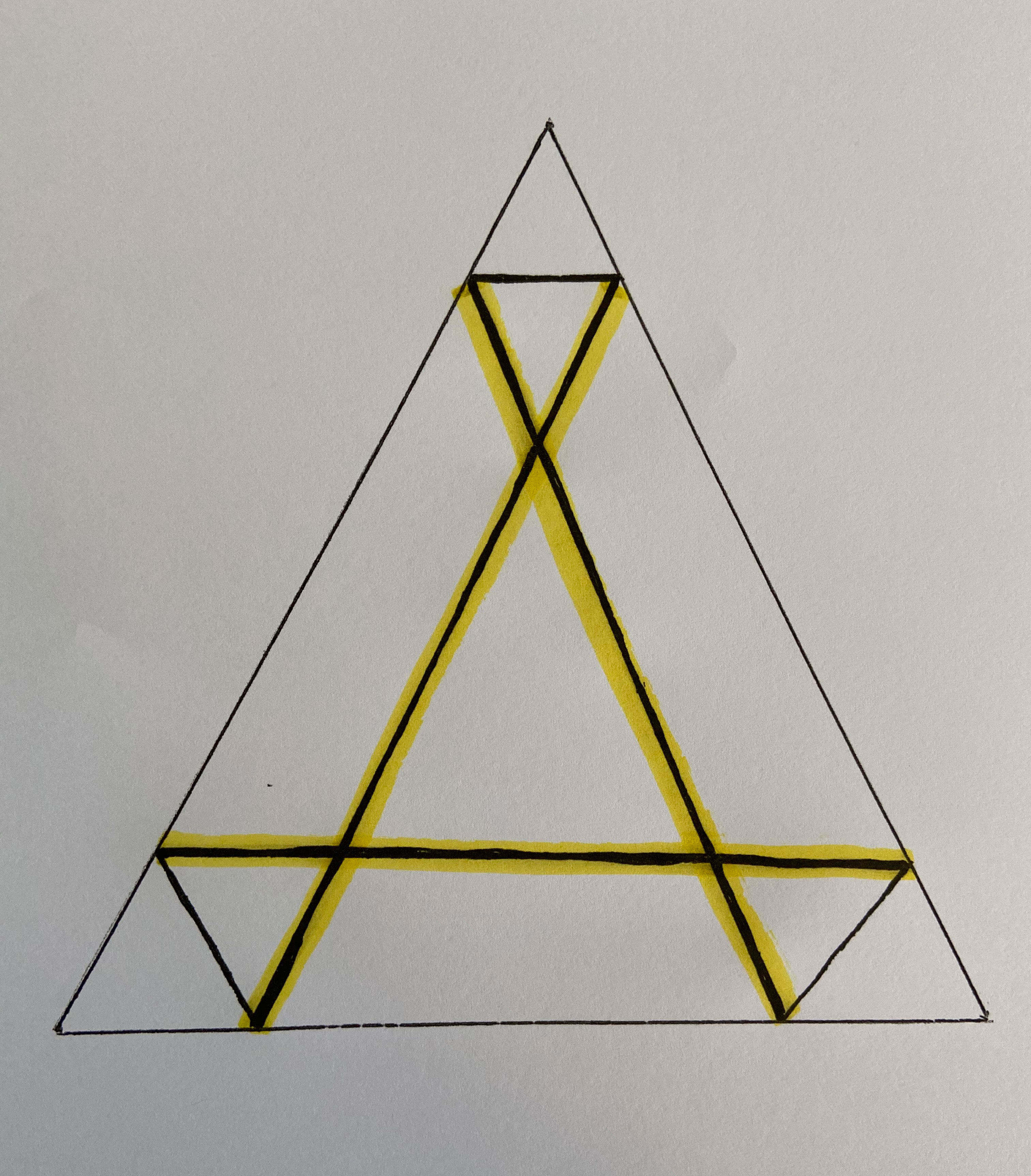
Step 4: Repeat Step 3 by drawing three new lines that are parallel to the small triangle’s sides. Now you can see an even smaller triangle in the center!
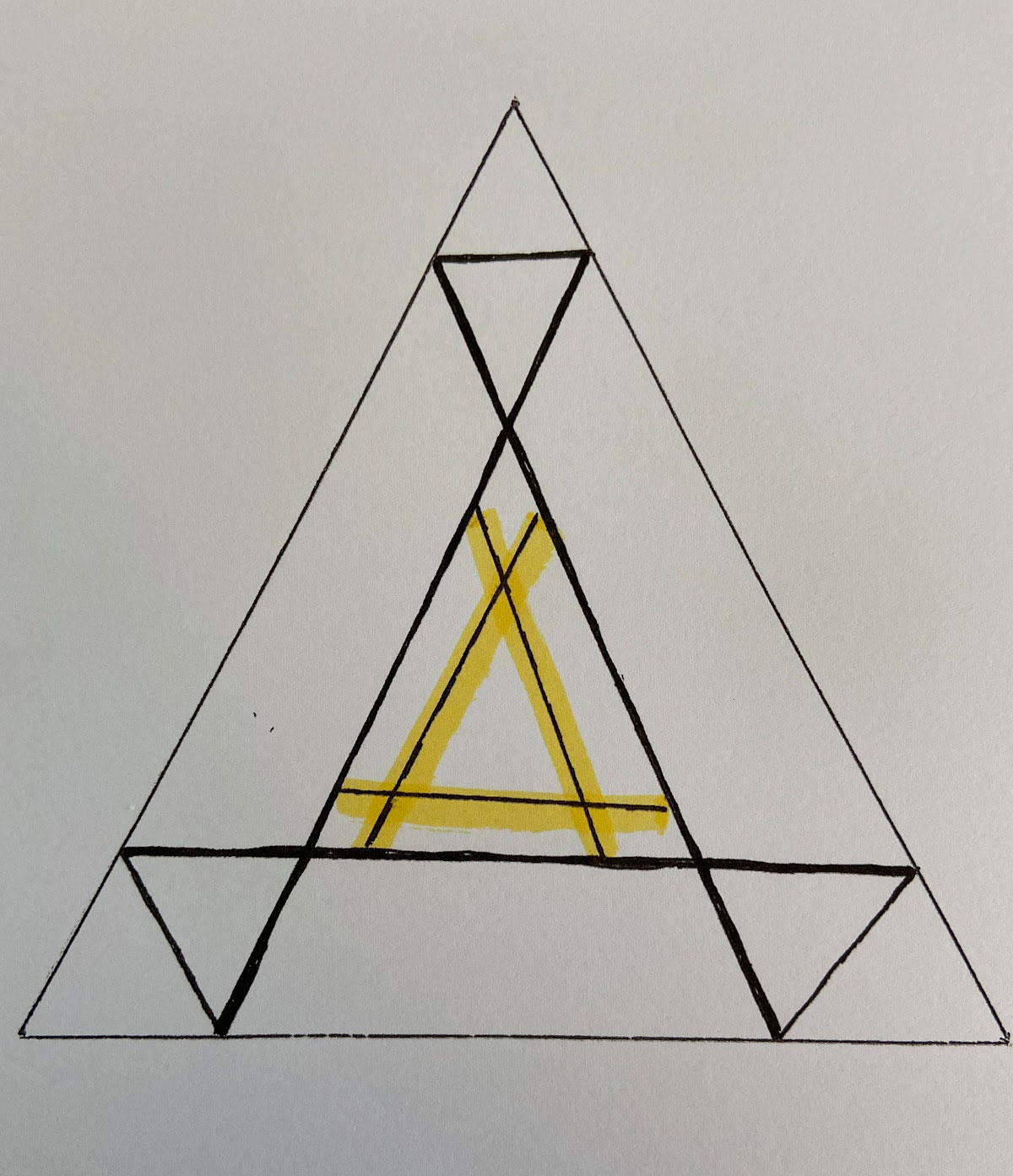
Step 5: Next, we’re going to erase. The dotted lines in this image show you which lines to erase.
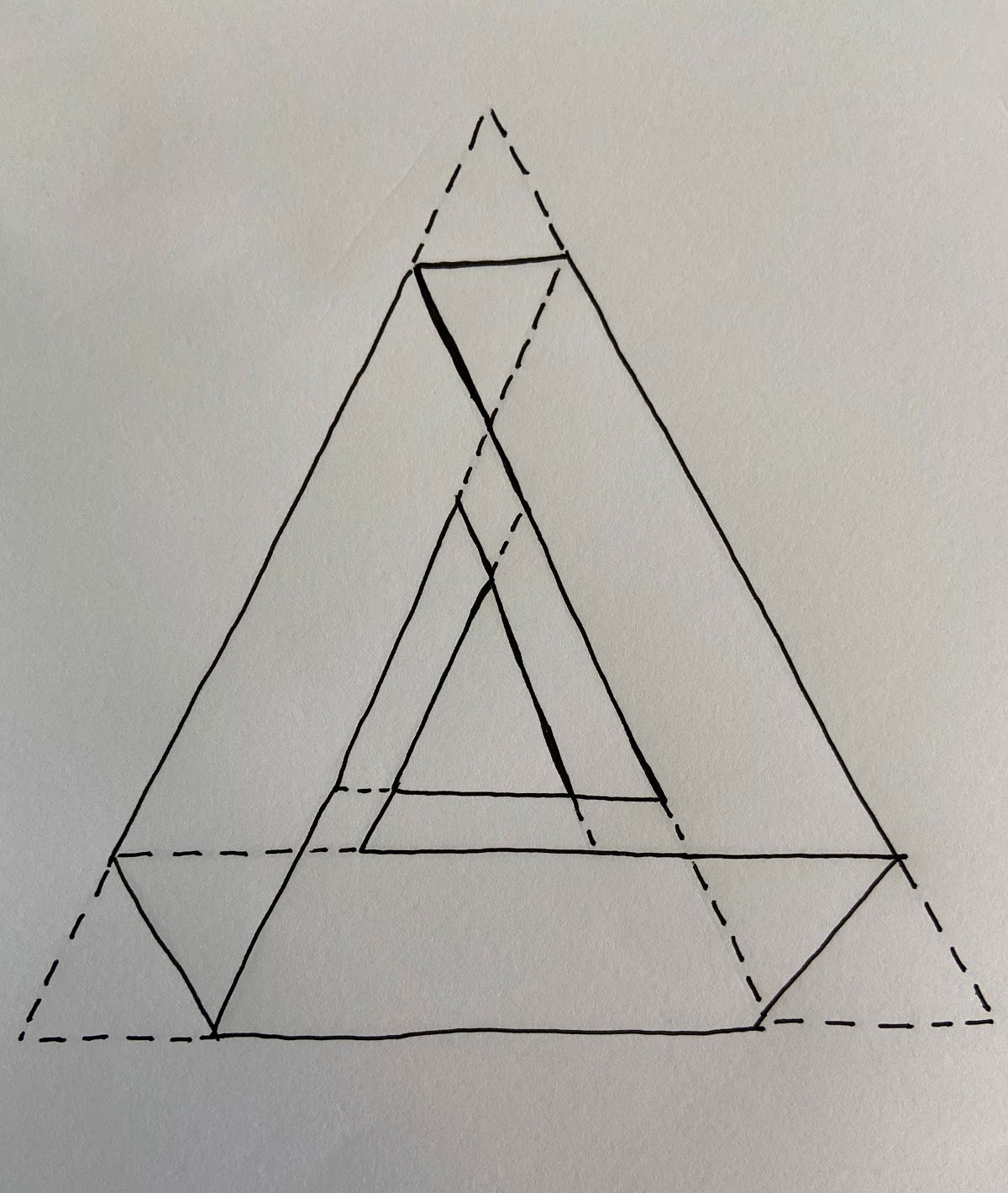
Step 6: Use a black pen or marker to darken the triangle’s lines.
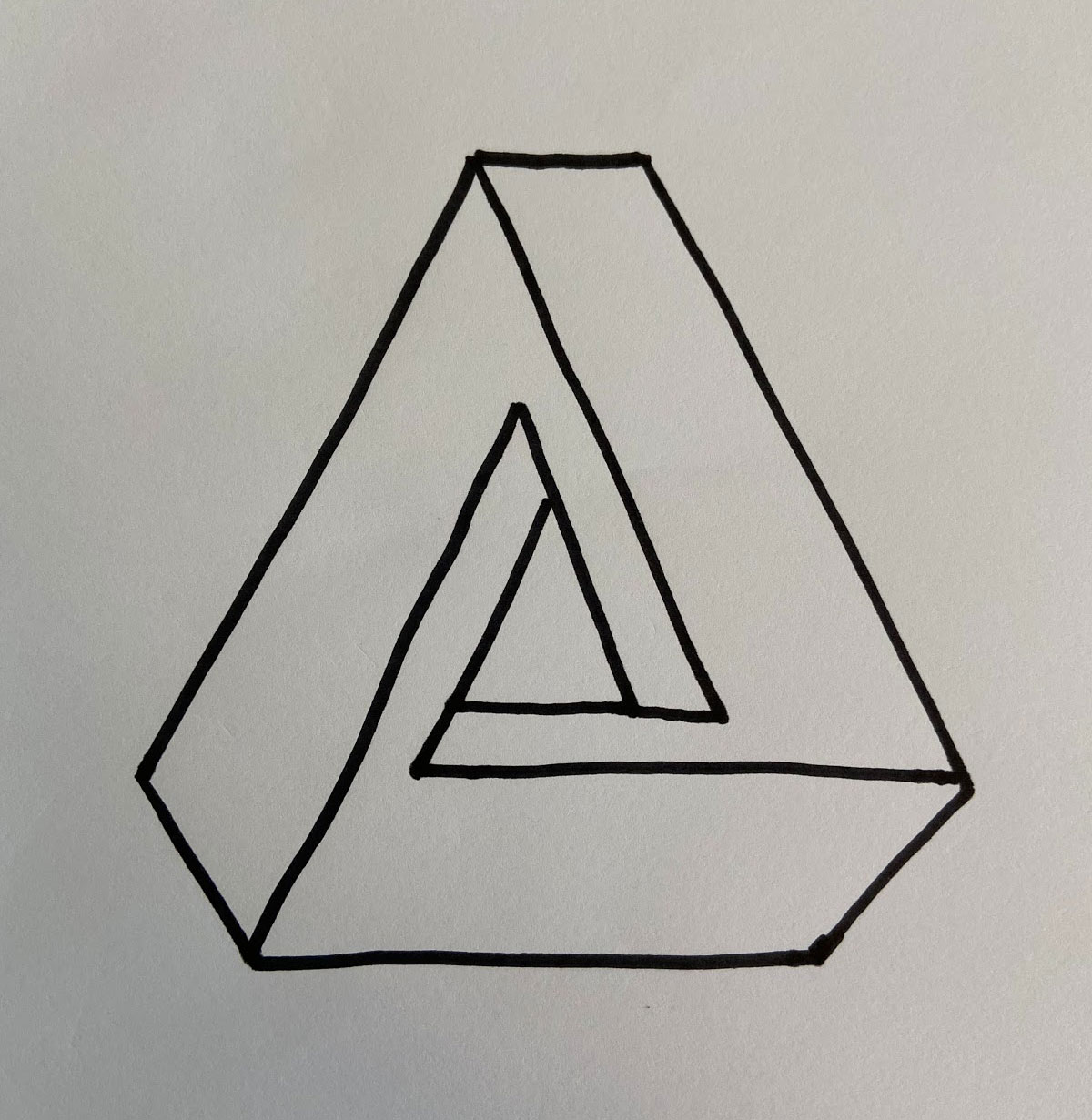
Step 7: Lastly, color two sides of the triangle and leave the other side empty to make your optical illusion triangle pop. Get creative with colors, designs, and patterns!
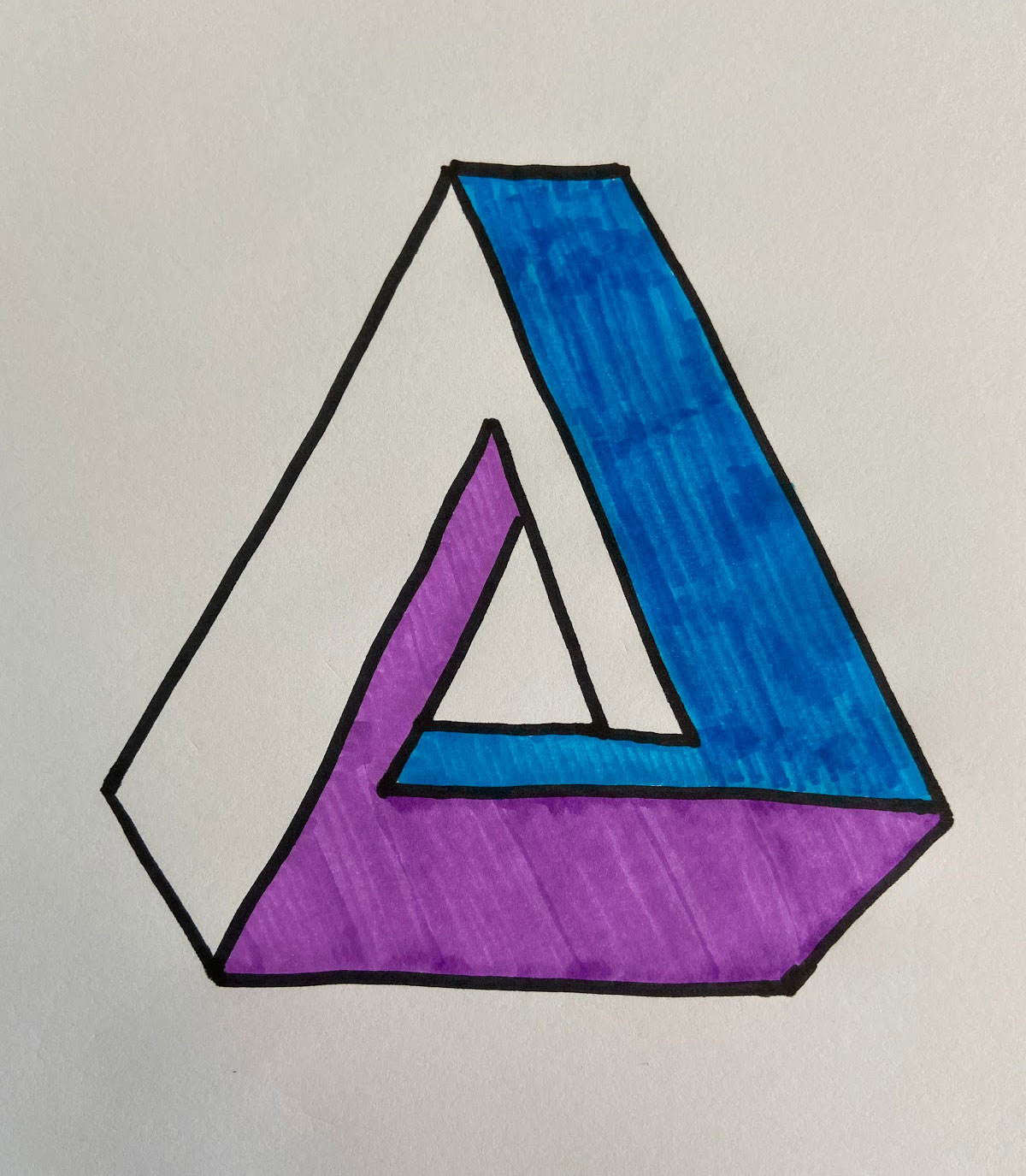
Bring on the Science!
How does the optical illusion triangle trick my brain?
This optical illusion triangle is an object that can only exist in a two-dimensional format. Also called the Penrose triangle, this object looks on paper like a solid, three-dimensional object, but it’s actually impossible to make in a true three-dimensional form. In order to make a three-dimensional model, we have to trick our brains! The model must have a break in it and we have to view it from a certain angle.
Did you know there are other Penrose polygons? Check them out to see more exciting optical illusions!
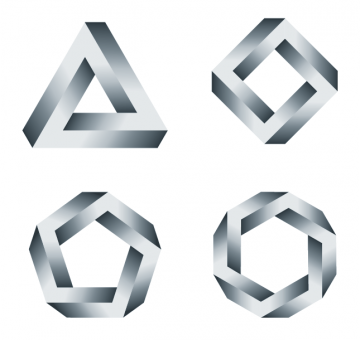
If your child was fascinated by the impossible triangle, they’ll love our Science Junior subscription, which features a whole month of optical illusions! Shop here!

